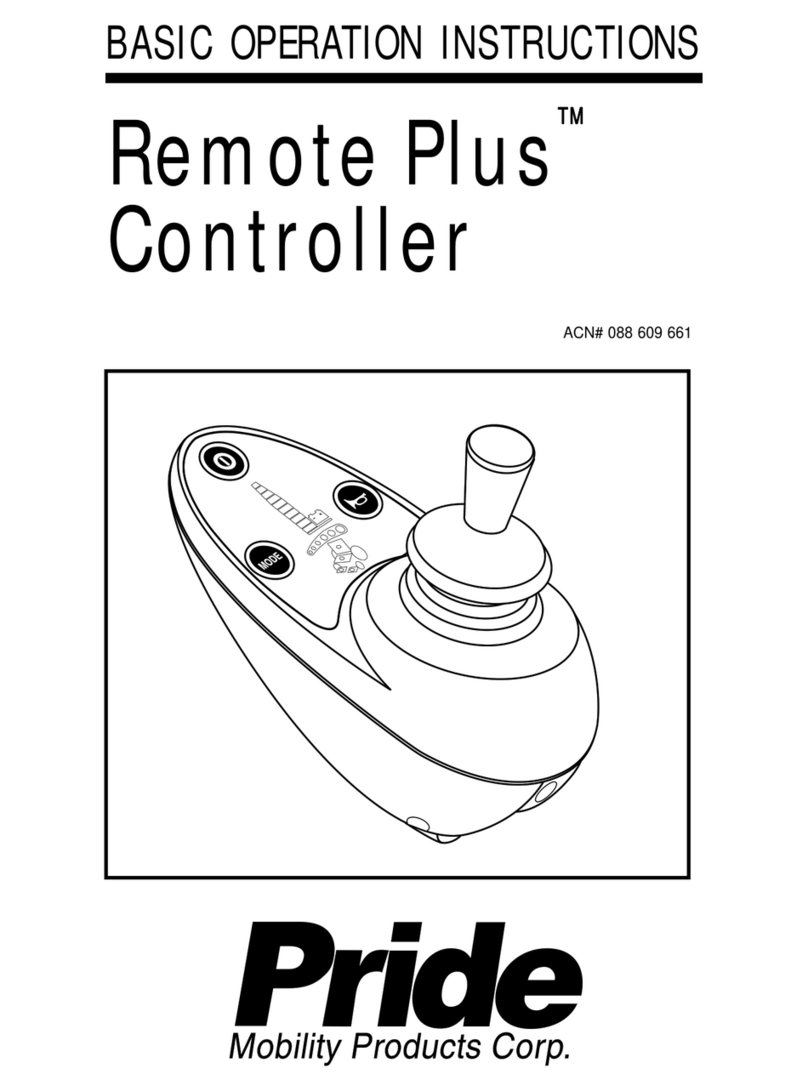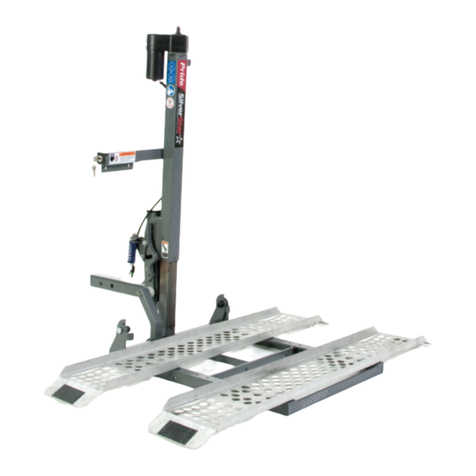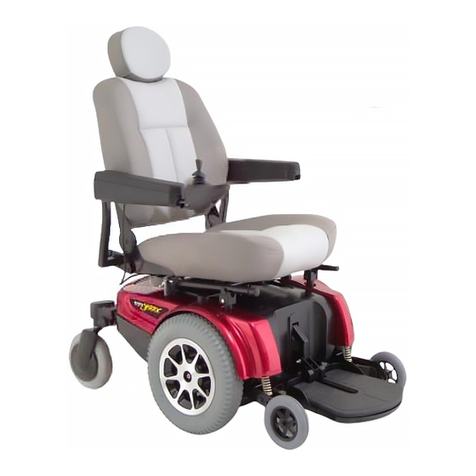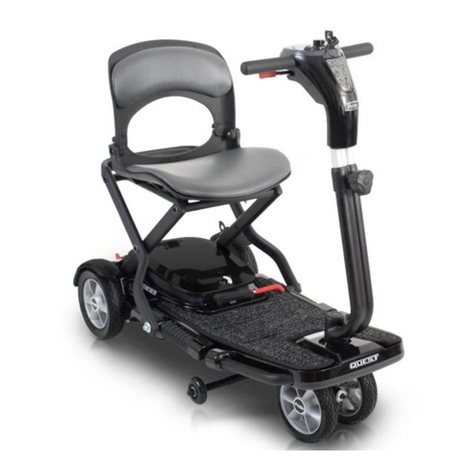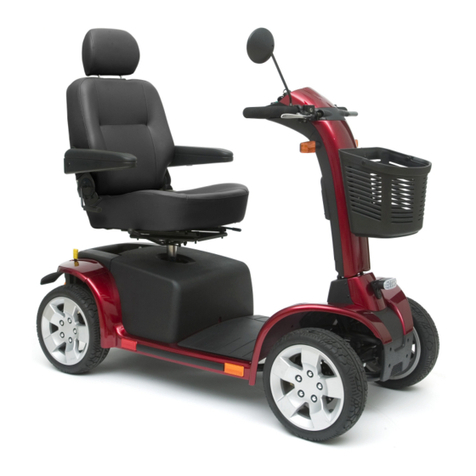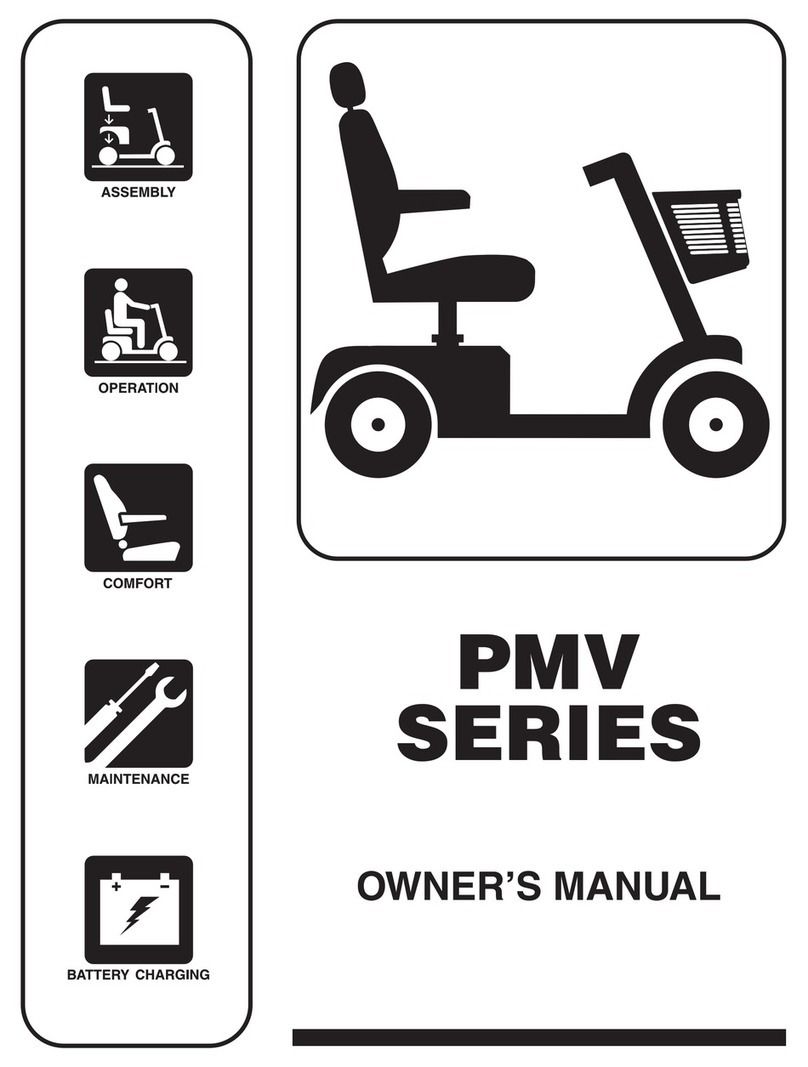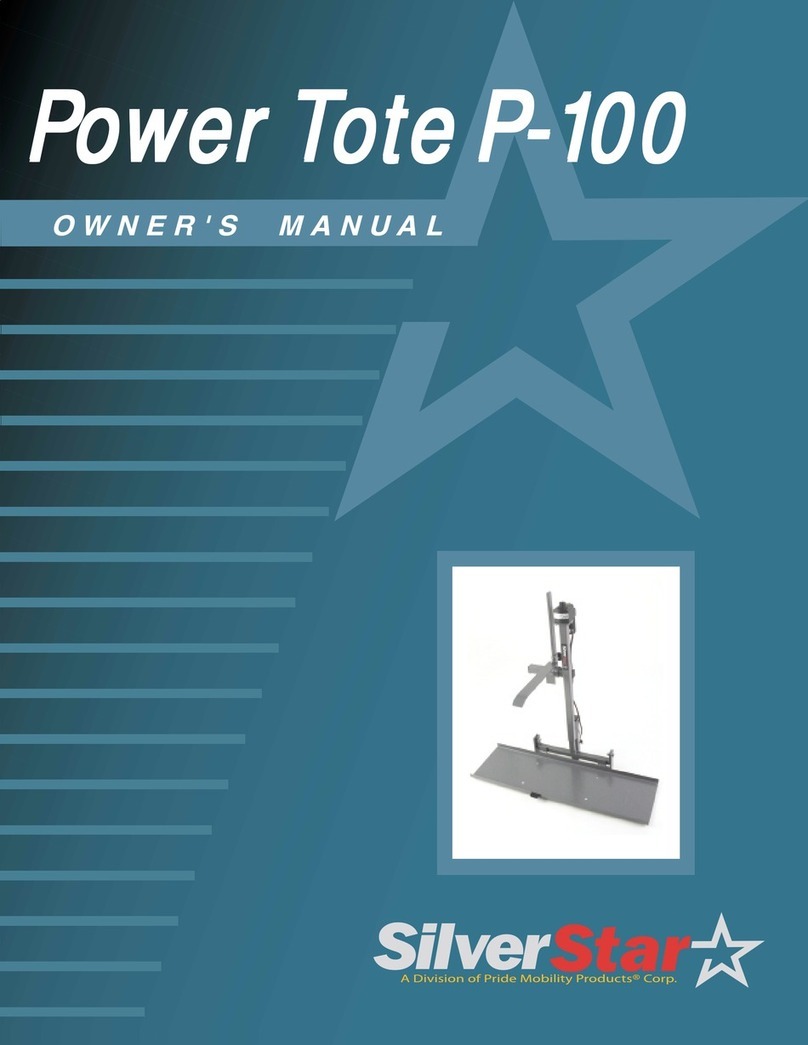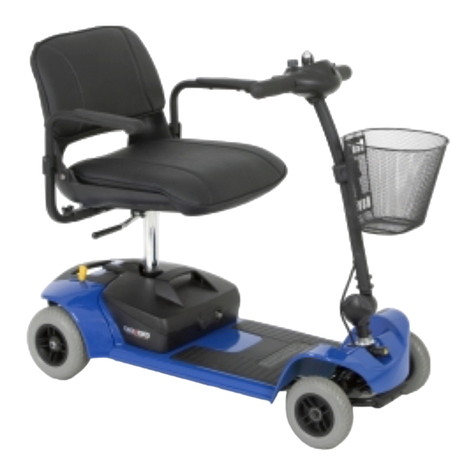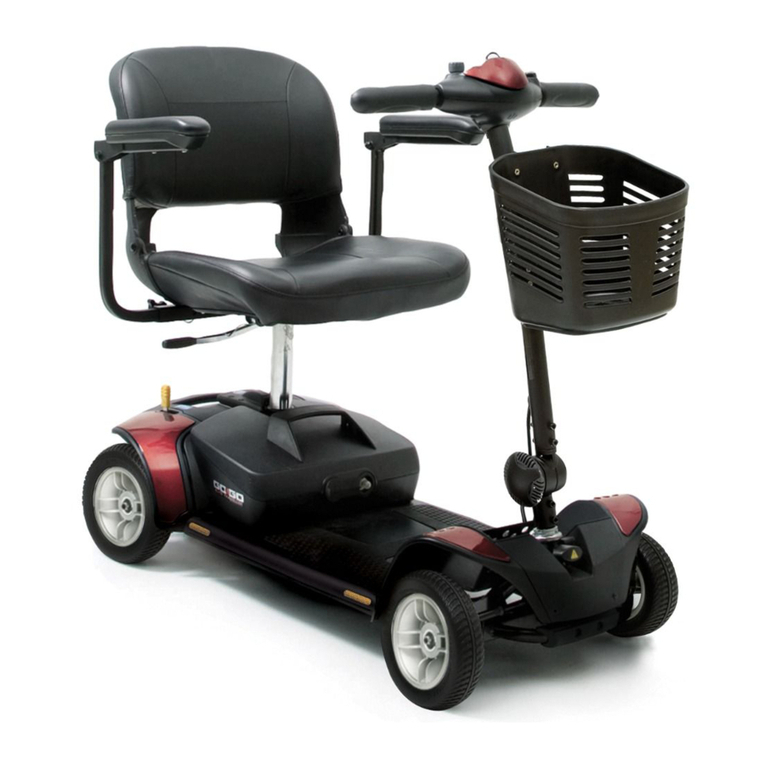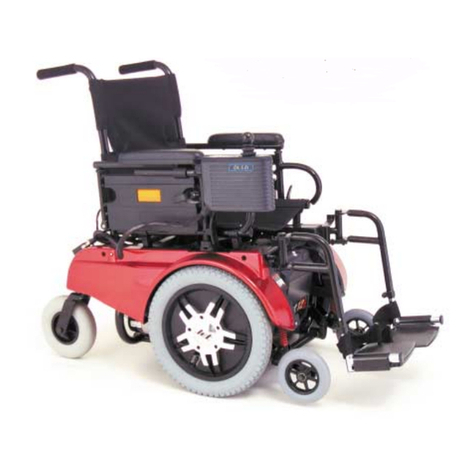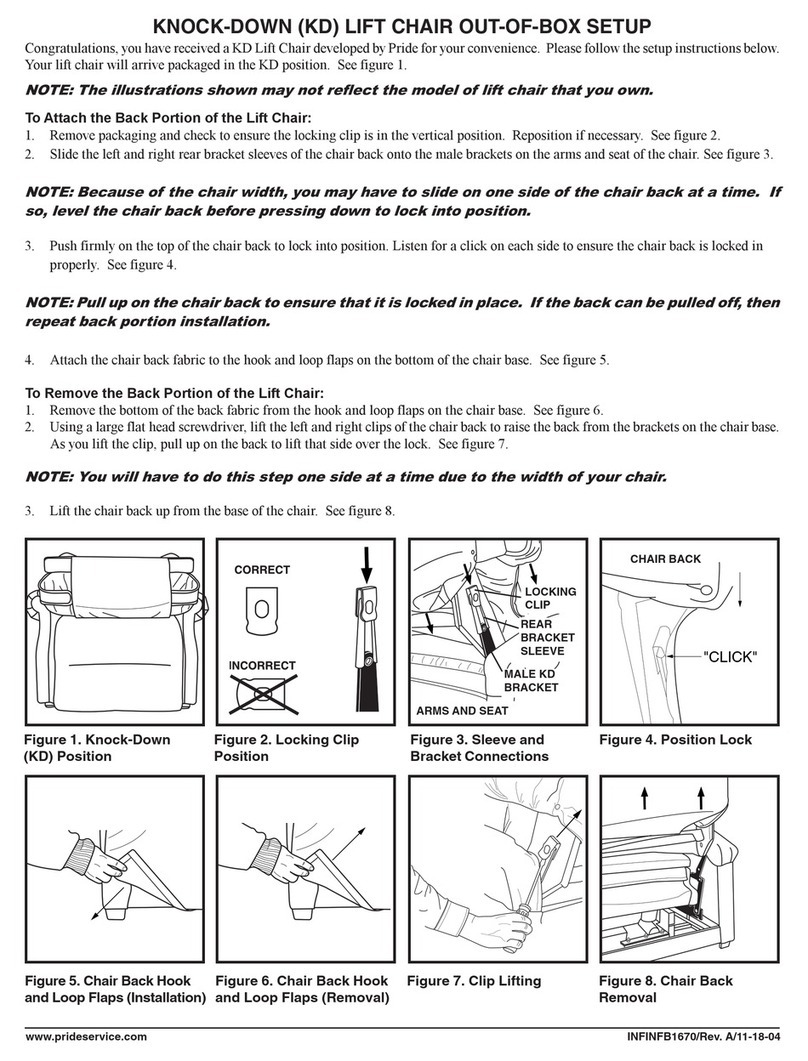
10 www.pridemobility.com SelectTraveller
II. SAFETY
Weight Limitations
Yourpowerchair isratedfora maximumweightcapacity. Pleaserefertothe specificationstablefor thislimit.
MANDATORY! Stay within the specified weight capacity of your power chair. Exceeding the weight
capacity voids your warranty. Pride will not be held responsible for injuries and/or property damage
resulting from failure to observe weight limitations.
WARNING! Do not carry passengers on your power chair. Carrying passengers on your power
chair may affect the center of gravity, resulting in a tip or a fall.
Tire Inflation
Ifyour powerchairis equippedwithpneumatictires, youshouldcheck orhavetheairpressurecheckedregularly. Proper
inflationpressures willprolongthe lifeofyourtires andhelpensure thesmoothoperationofyourpowerchair.
WARNING! It is important that the psi/bar/kPa air pressure rating indicated on the tire be maintained
in pneumatic tires at all times. Do not underinflate or overinflate your tires. Low pressure may result
in loss of control, and overinflated tires may burst. Failure to maintain the psi/bar/kPa air pressure
rating indicated on the pneumatic tires at all times may result in tire and/or wheel failure.
WARNING! Inflate your power chair drive tires from a regulated air source with an available pressure
gauge. Inflating your tires from an unregulated air source could overinflate them, resulting in a
burst tire.
NOTE: If the tires on your power chair list the psi rating only, use the following conversion formulas to find
the bar or kPa rating: bar = psi x 0.06895; kPa = psi x 6.89476.
Incline Information
Moreandmorebuildingshaverampswithspecifieddegreesofinclination,designedfor easyandsafeaccess.Someramps
mayhave turning switchbacks(180-degreeturns)thatrequire you tohavegoodcornering skills onyourpowerchair.
!Proceedwithextremecautionasyouapproach the downgrade of a ramp or other incline.
!Takewide swingswithyourpowerchair’sfrontwheels aroundanytightcorners.If youdothat,thepowerchair’srear
wheelswillfollow a wide arc,notcutthecorner short, and notbumpintoorget hung up onanyrailingcorners.
!When driving down a ramp, keep the power chair’s speed adjustment set to the slowest speed setting to ensure a
safelycontrolleddescent.
!Avoid sudden stops and starts.
Whenclimbinganincline,trytokeepyourpowerchairmoving.Ifyoumuststop,startupagainslowly,andthenaccelerate
cautiously. When driving down an incline, set your power chair to the slowest speed setting and drive in the forward
directiononly. Ifyourpowerchair starts tomovedownthe inclinefasterthanyou anticipatedordesired,allow it tocome
toa complete stop byreleasingthejoystick, then pushthejoystickforwardslightly to ensureasafelycontrolleddescent.
WARNING! When on any sort of an incline or decline, never place the power chair in
freewheel mode while seated on it or standing next to it.
WARNING! You should not travel up or down a potentially hazardous incline (i.e., areas
covered with snow, ice, cut grass, or wet leaves).
WARNING! When climbing an incline, do not zigzag or drive at an angle up the face of
the incline. Drive your power chair straight up the incline. This greatly reduces the
possibility of a tip or a fall. Always exercise extreme caution when negotiating an
incline.
WARNING! If your power chair is equipped with a reclining seatback, do not attempt to
negotiate inclines with the seat in a reclined position. Do not attempt to negotiate
obstacles with the seat in a reclined position unless an attendant is present to help
stabilize the chair. Failure to heed could result in the power chair tipping over.






